Through the years, I have occasionally strayed off the strictly educational or informative path in this column. It is happening again today… because late Saturday night we lost a heifer.
Just three weeks ago, Steve came in and said one of the Holstein heifers in the prefresh pen was going into labor (it was, of course, 10 p.m. on a Sunday night).
Out to the barn
Since I had had a good long afternoon nap, I went out later that night to check on her. Our prefresh pen is a large shed built onto the original tie stall barn. If a cow is cooperative, she’ll be laying so you can check her from the doorway. If not, well, into the pen I went and found her in the back laying down.
I walked around her, checking her vulva. No sign of anything, and she hadn’t moved an inch. I walked back around to her head, crouched down, and she immediately put her head in my lap and looked up at me as if to say, “Mom, I remember you raising me as a calf, so what is going on here? Please pet me!”
So, we spent some time together and then I left her to her labors.
It’s a girl!
Labor she did. Those heifer labors can be long, and Steve helped her bring a heifer calf into the world in the early morning hours. Fresh heifer and new calf were both doing well.
Interestingly, the new mother was a twin to a bull. Those of you familiar with cows will know that a heifer born twin to a bull has more than a 90 percent chance of being a freemartin.
A freemartin is infertile with an underdeveloped reproductive system.
A blood test shortly after birth showed that she did not have any Y chromosomes circulating and she was not a freemartin — therefore she was able to become pregnant and have a calf.
So the heifer entered the milking herd, settling in nicely, and her daughter moved into a fine stall in the calf barn, wearing a nice new calf coat.
Something’s wrong
All was going well until Day 5 when Steve noticed the heifer wasn’t feeling well. Bringing her into the flat parlor, he checked her out and found that she was running a fever and had an LDA (left displaced abomasum, meaning one of her four stomachs wasn’t where it was supposed to be). The veterinarian was called and surgery was performed.
After recovering and rejoining the herd, the heifer was improving steadily until Saturday, nearly two weeks later, when she didn’t want to get up in the morning. Before Steve was able to get her into the old flat parlor to look her over, she went down.
‘A cow is down.’ “A cow is down” is not good news on any farm. Cows are not small, so it takes care and skill to pick them up and move them to where they can be cared for and (hopefully) get up on their own. Steve is able to do this using by putting a halter on the cow and gently picking her up using a large bucket on the skid loader, and moving her to clean grass or a bedded area.
Being winter, she went to a bedded pack.
Call the vet
The vet was called again, and it was determined that she had developed a uterine infection that had gone septic. There was no discharge, no odors, she internalized everything.
In spite of all care, in spite of all treatments throughout the day, she died Saturday night.
Real farmers care
Why share this story? Because I know that some nonfarmers read this column.
I wanted to let our nonfarm friends know that most animals are not raised and cared for in the poor situations that get sensationalized in some media outlets, but by people who care enough to go out late at night to check on animals in labor; to go out early in the morning and deliver calves and take care of them in below-freezing temperatures; to call and pay for the veterinarian to examine, perform surgery and treat the same animal four times.
Who cried because their heifer died Saturday night.
(The author is an OSU Extension dairy specialist located at the extension center in Wooster; 330-263-3799. Send comments or questions in care of Farm and Dairy, P.O. Box 38, Salem, OH 44460.)


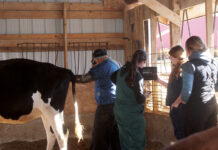
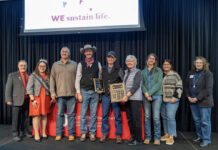

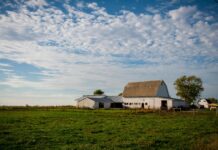
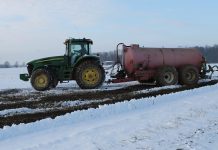
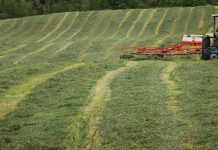
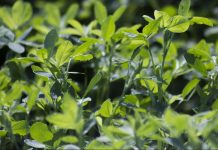




Dianne, thank you for this wonderful article.
Thank you Dianne for the story. I feel for you. Heartbreaking as your story is non farm folk need to hear what real farm life is like, that even with the most love, care and attention you can give to your livestock that bad, sad and unfortunate things do happen and that it is not always butterflies and rainbows.